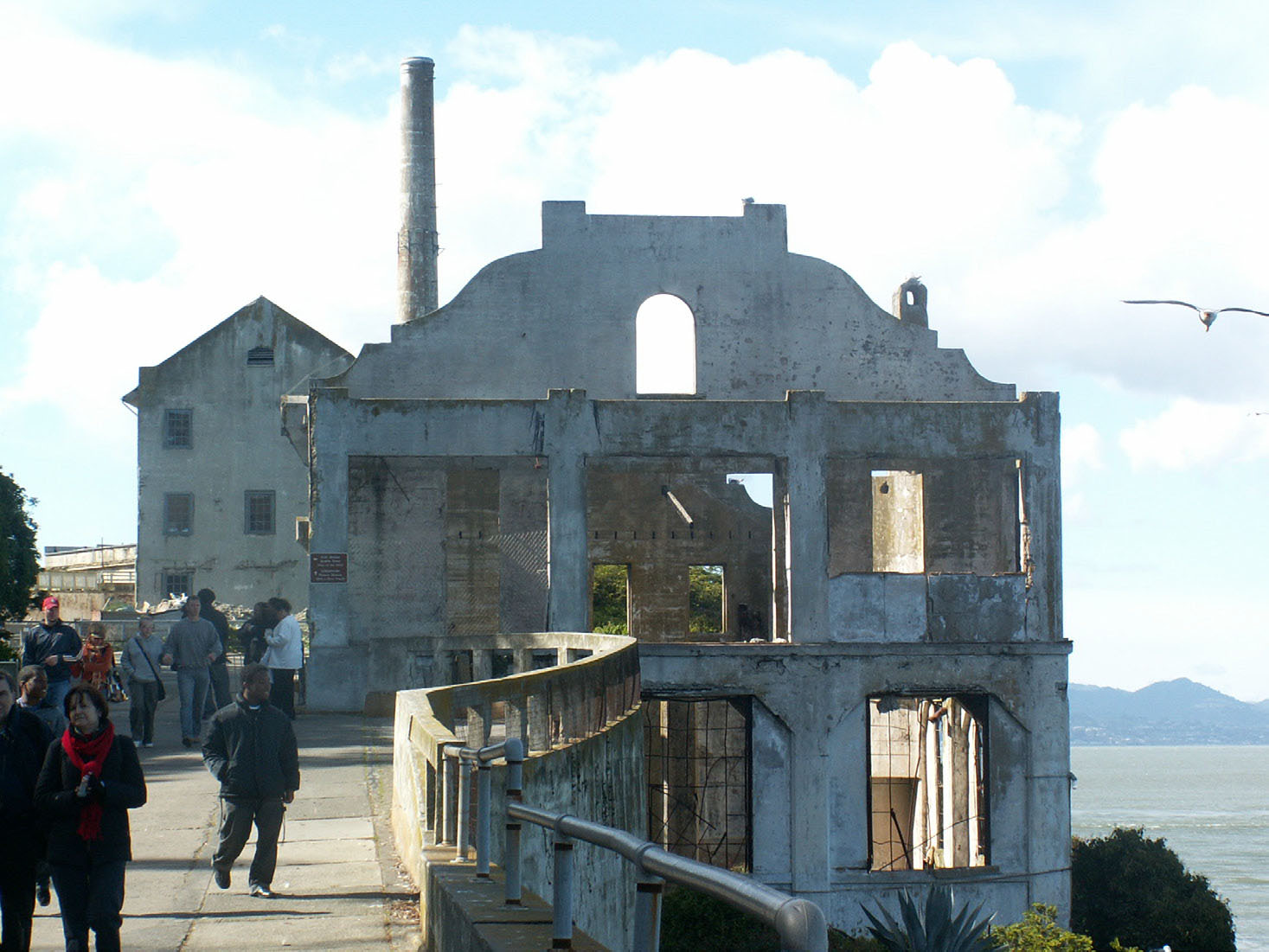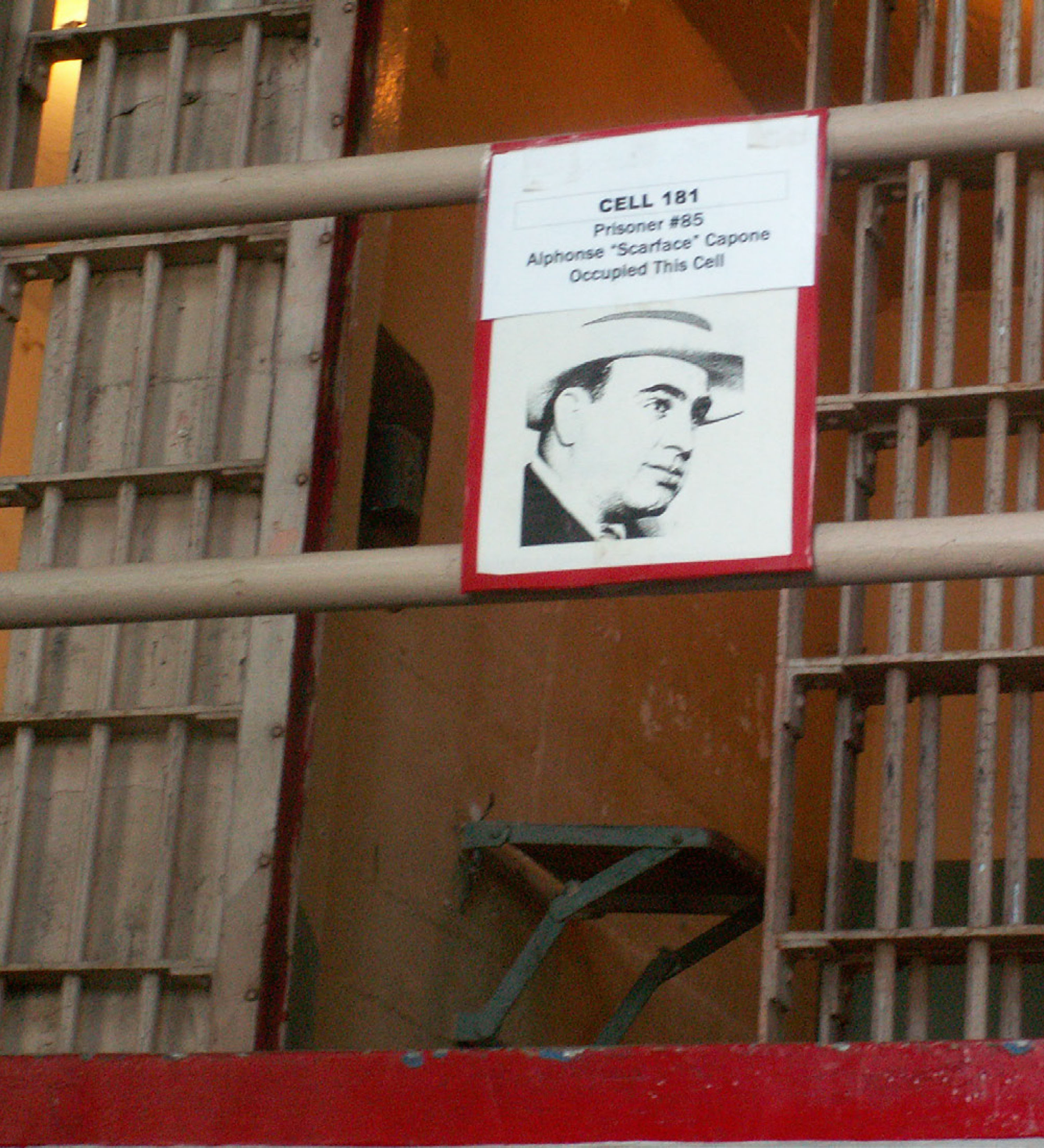 by Glenn R Swift With the rise of organized crime during the Great Depression, the Department of Justice began an exhaustive search for a location to construct an escape-proof maximum security prison. With a ready-made facility surrounded by the bone-chilling, swift currents of San Francisco Bay, Alcatraz was quickly chosen as the ideal site. After ten months of “renovations,” the island became a federal prison in August of 1934. Quickly nicknamed “The Rock” by inmates, for the next 29 years Alcatraz housed some of America’s most violent and notorious criminals. The legendary Al Capone, Robert Franklin Stroud (the “Birdman of Alcatraz”) and Alvin Karpis, who served more time at Alcatraz than any other inmate (25 years), were some of The Rock’s most well-known “residents.”
by Glenn R Swift With the rise of organized crime during the Great Depression, the Department of Justice began an exhaustive search for a location to construct an escape-proof maximum security prison. With a ready-made facility surrounded by the bone-chilling, swift currents of San Francisco Bay, Alcatraz was quickly chosen as the ideal site. After ten months of “renovations,” the island became a federal prison in August of 1934. Quickly nicknamed “The Rock” by inmates, for the next 29 years Alcatraz housed some of America’s most violent and notorious criminals. The legendary Al Capone, Robert Franklin Stroud (the “Birdman of Alcatraz”) and Alvin Karpis, who served more time at Alcatraz than any other inmate (25 years), were some of The Rock’s most well-known “residents.”  Alcatraz’s role as a federal penitentiary was relatively short lived. By decision of U.S. Attorney General Robert F. Kennedy, the penitentiary was closed for good on March 21, 1963. The prison was closed because it was far more expensive to operate than other prisons, and the bay was being polluted by the sewage from the approximately 250 inmates and 60 Bureau of Prisons families on the island. Consequently, it was deemed easier to build a new, traditional, land-bound prison than to pay for all the upkeep and support the Alcatraz prison required. The Rock had definitely lived up to its intended purpose of providing an escape-proof facility. During its 29 years of operation, the penitentiary never logged any officially successful escapes. In all at- tempts, escapees were either shot dead or believed to be drowned in the frigid San Francisco Bay. Thirty-six prisoners were involved in attempts; seven were shot and killed, two drowned, five unaccounted for, the rest recaptured. Two prisoners made it off the island, but were returned, one in 1945 and one in 1962. Three escapees, Frank Morris, and brothers John and Clarence Anglin, dis- appeared from their cells on June 11, 1962. This attempt, popularized in the motion picture Escape from Alcatraz, was among the most intricate ever devised. Though evidence was discovered that they died in their attempt, they are officially listed as “missing and presumed drowned.” Ply- wood paddles and parts of a raft made from raincoats were found on nearby Angel Island by the FBI. However, to this day no one has surfaced claiming to be or even to have seen the escapees. One of the most colorful episodes in the history of The Rock took place six years after the prison’s closing. In 1969, a group of American Indians from many different tribes, calling themselves the United Indians of All Tribes, occupied the island and proposed an education center, ecology center and cultural center. During the occupation, several buildings were damaged or destroyed, including the recreation hall, Coast Guard quarters and the warden’s home. A number of other buildings (mostly apartments) were destroyed by the U.S. Government after the occupation had ended.
Alcatraz’s role as a federal penitentiary was relatively short lived. By decision of U.S. Attorney General Robert F. Kennedy, the penitentiary was closed for good on March 21, 1963. The prison was closed because it was far more expensive to operate than other prisons, and the bay was being polluted by the sewage from the approximately 250 inmates and 60 Bureau of Prisons families on the island. Consequently, it was deemed easier to build a new, traditional, land-bound prison than to pay for all the upkeep and support the Alcatraz prison required. The Rock had definitely lived up to its intended purpose of providing an escape-proof facility. During its 29 years of operation, the penitentiary never logged any officially successful escapes. In all at- tempts, escapees were either shot dead or believed to be drowned in the frigid San Francisco Bay. Thirty-six prisoners were involved in attempts; seven were shot and killed, two drowned, five unaccounted for, the rest recaptured. Two prisoners made it off the island, but were returned, one in 1945 and one in 1962. Three escapees, Frank Morris, and brothers John and Clarence Anglin, dis- appeared from their cells on June 11, 1962. This attempt, popularized in the motion picture Escape from Alcatraz, was among the most intricate ever devised. Though evidence was discovered that they died in their attempt, they are officially listed as “missing and presumed drowned.” Ply- wood paddles and parts of a raft made from raincoats were found on nearby Angel Island by the FBI. However, to this day no one has surfaced claiming to be or even to have seen the escapees. One of the most colorful episodes in the history of The Rock took place six years after the prison’s closing. In 1969, a group of American Indians from many different tribes, calling themselves the United Indians of All Tribes, occupied the island and proposed an education center, ecology center and cultural center. During the occupation, several buildings were damaged or destroyed, including the recreation hall, Coast Guard quarters and the warden’s home. A number of other buildings (mostly apartments) were destroyed by the U.S. Government after the occupation had ended.  After 18 months of occupation, the government forced the Native Americans off the island. But new federal policies designed to enhance Indian self-determination were soon established as a direct result of the occupation. In deference to the occupation, American Indian groups continue to hold ceremonies on the island. Most notable are Columbus Day and Thanksgiving Day when they hold a “Sunrise Gathering.” Interestingly, The Rock’s bleak walls also provided housing for the Bureau of Prison staff and their families. Strange as it may seem, some of these folks still fondly refer to the island as “home,” and many belong to an organization known as the Alcatraz Alumni Association. Like a happy family, Association members participate in the annual reunion that celebrates the opening of the prison on the second weekend of August. Most are eager to share their favorite stories and experiences about growing up on The Rock.
After 18 months of occupation, the government forced the Native Americans off the island. But new federal policies designed to enhance Indian self-determination were soon established as a direct result of the occupation. In deference to the occupation, American Indian groups continue to hold ceremonies on the island. Most notable are Columbus Day and Thanksgiving Day when they hold a “Sunrise Gathering.” Interestingly, The Rock’s bleak walls also provided housing for the Bureau of Prison staff and their families. Strange as it may seem, some of these folks still fondly refer to the island as “home,” and many belong to an organization known as the Alcatraz Alumni Association. Like a happy family, Association members participate in the annual reunion that celebrates the opening of the prison on the second weekend of August. Most are eager to share their favorite stories and experiences about growing up on The Rock.  Today, Alcatraz is listed as a National Historic Landmark supervised by the National Park Service as part of the Golden Gate National Recreational Area. Visitors can reach the island by ferry from Fisherman’s Wharf in San Francisco and take a guided audio tour of the old cell blocks. From time to time, some of Alcatraz’s former inmates are on hand to give you a first-hand account of what life was like on the Rock. For more information about touring Alcatraz, go to www.blueandgoldfleet.com.
Today, Alcatraz is listed as a National Historic Landmark supervised by the National Park Service as part of the Golden Gate National Recreational Area. Visitors can reach the island by ferry from Fisherman’s Wharf in San Francisco and take a guided audio tour of the old cell blocks. From time to time, some of Alcatraz’s former inmates are on hand to give you a first-hand account of what life was like on the Rock. For more information about touring Alcatraz, go to www.blueandgoldfleet.com.
